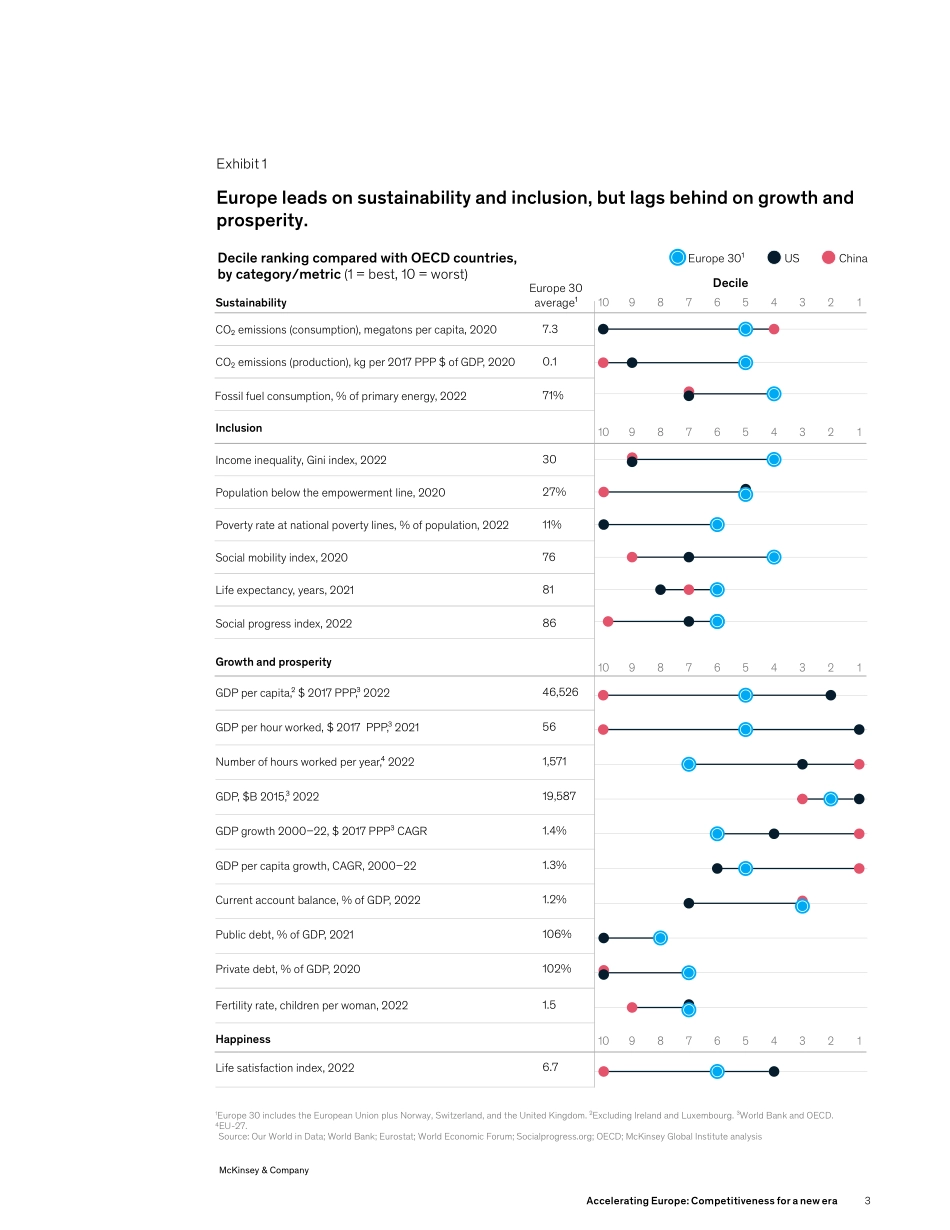January 2024Accelerating Europe: Competitiveness for a new eraTurbulent times have highlighted new fragilities in Europe’s economies. Addressing them could be the catalyst for a new wave of competitiveness and growth.by Massimo Giordano, Solveigh Hieronimus, Sven Smit, Marc-Antoine de La Chevasnerie, Jan Mischke, Efi Koulouridi, Guillaume Dagorret, and Nicole BrunettiEurope is a global leader on sustainability and inclusion but needs to revive its competitivenessSustainability, inclusion, and growth reinforce—or undermine—one another. Together these three elements can deliver a prosperous and green future.1 Thus far, Europe has a strong record on the first two (Exhibit 1). It leads the world in reducing carbon emissions. It also leads on most dimensions of economic inclusion and social progress, including income inequality and life expectancy. But Europe has not fared so well on the growth part of this equation. Europe’s per capita GDP (at purchasing power parity, or PPP) was 27 percent 1 From poverty to empowerment: Raising the bar for sustainable and inclusive growth, McKinsey Global Institute, September 2023.2 OECD. below that of the United States in 2022.2 About half of this gap reflects productivity differences, while the other half is due to societal choices to work fewer hours per capita across a lifetime. Unless Europe can reenergize growth, its leading position on sustainability and inclusion could be compromised, eroding Europeans’ standard of living. Accelerating growth requires becoming more globally competitive, even in the face of mounting pressures. This article, part of an ongoing research series by MGI, presents a fresh perspective on these issues. It delves into the factors that will define At a glance — Europe is one of the world’s leading regions in terms of sustainability and inclusion. But its per capita income remains 27 percent lower than in the United States. Closing that prosperity gap depends on accelerating growth by becoming more globally competitive. — We have entered a new geo-economic era that makes competitiveness more urgent and more challenging for Europe in seven arenas that matter for the future, from energy to technology and supply chains. — Shoring up competitiveness in these areas is critical. We estimate that about €500 billion to €1 trillion of value added could be at stake annually by 2030. For perspective, this is three to six times the incremental annual investment needed to achieve net zero. Addressing these issues will determine the region’s ability to unlock future growth while preserving its unrivaled sustainability and inclusion model. — To thrive in this new era, Europe needs an integrated agenda for competitiveness, with business leaders and policy makers working hand in hand toward ambitious new goals. Critical choices and potentially uneasy trade-offs lie ahead. — Sharply ...


